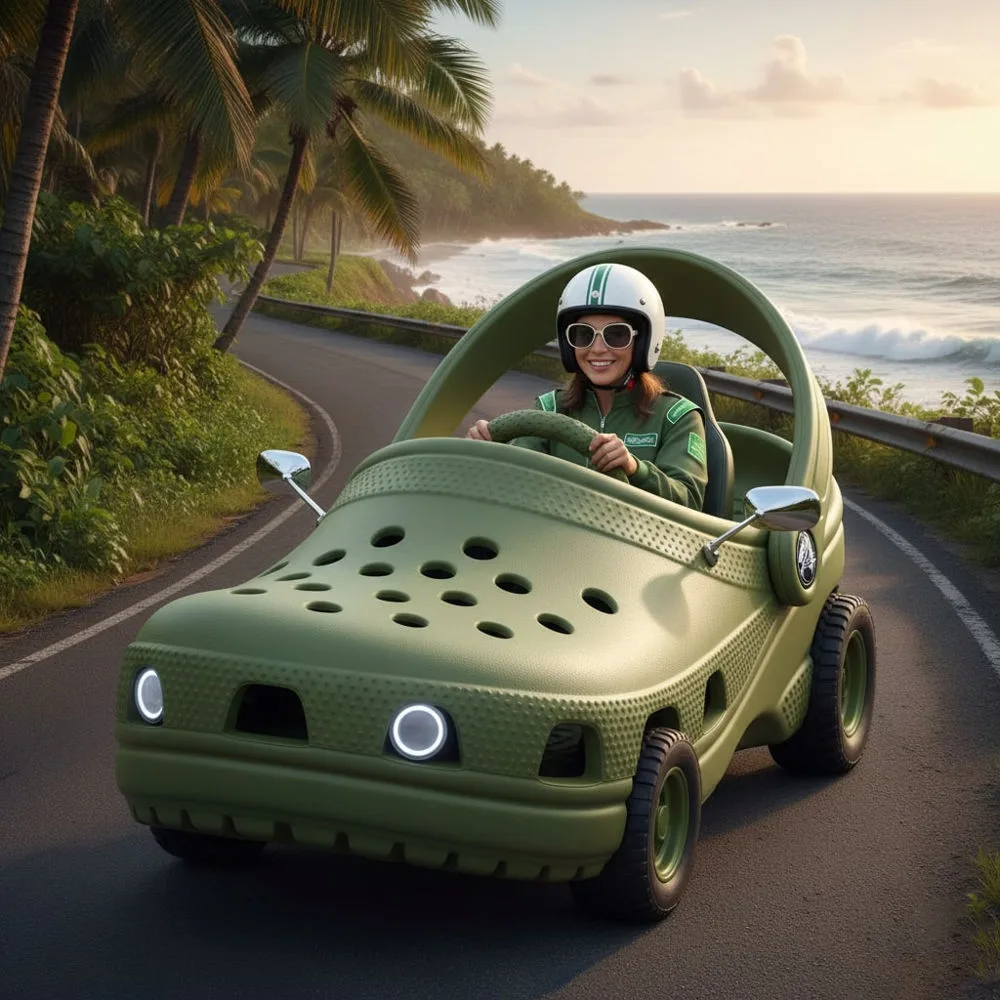The automotive world has witnessed countless creative interpretations over the decades, but few concepts capture imagination quite like Crocs shaped cars. These unique vehicles represent a fascinating intersection between beloved footwear design and automotive engineering, creating mobile masterpieces that turn heads wherever they roll. From concept showcases to functional custom builds, the phenomenon of cars designed to resemble the iconic foam clogs has become a captivating niche in automotive culture.
The Origins of Footwear Inspired Vehicle Design
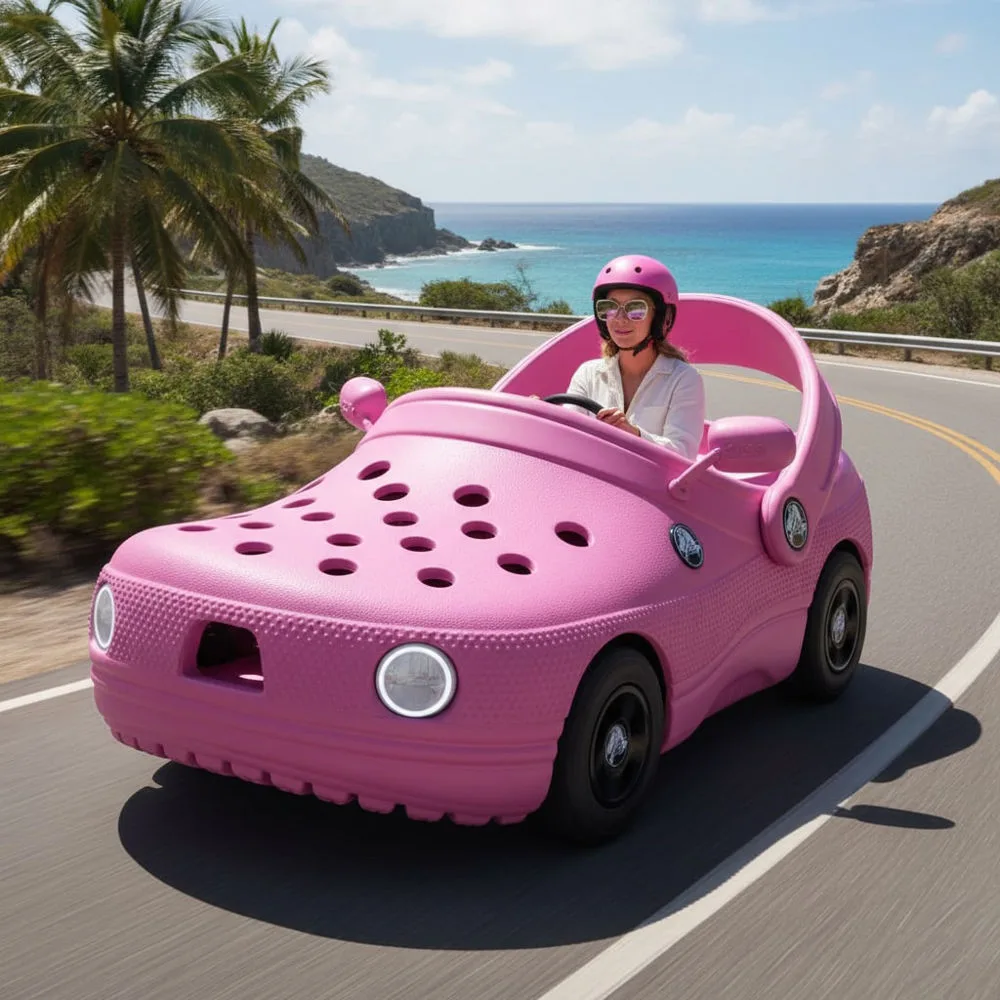
Early Concepts and Creative Vision
The concept of creating vehicles that mirror everyday objects isn’t entirely new in automotive history. However, the specific idea of Crocs shaped cars emerged from the creative minds of custom car builders and concept artists who recognized the distinctive silhouette and cultural significance of these popular shoes. The rounded, perforated design of Crocs provides an surprisingly suitable template for automotive interpretation, offering both aesthetic appeal and functional possibilities.
The movement gained momentum through social media platforms, where automotive enthusiasts began sharing digital renderings and concept sketches of what a Crocs inspired vehicle might look like. These early visualizations captured the essence of the original footwear while incorporating essential automotive elements like wheels, doors, and windows in creative ways that maintained the shoe’s recognizable form factor.
Design Philosophy Behind the Concept
Creating Crocs shaped cars requires a unique approach to automotive design that balances whimsy with functionality. Designers must consider how to translate the soft, organic curves of foam footwear into the structured requirements of a vehicle chassis while maintaining safety standards and practical usability. The challenge lies in preserving the playful, approachable aesthetic of Crocs while ensuring the resulting vehicle meets basic transportation needs.
Notable Examples of Crocs Shaped Cars
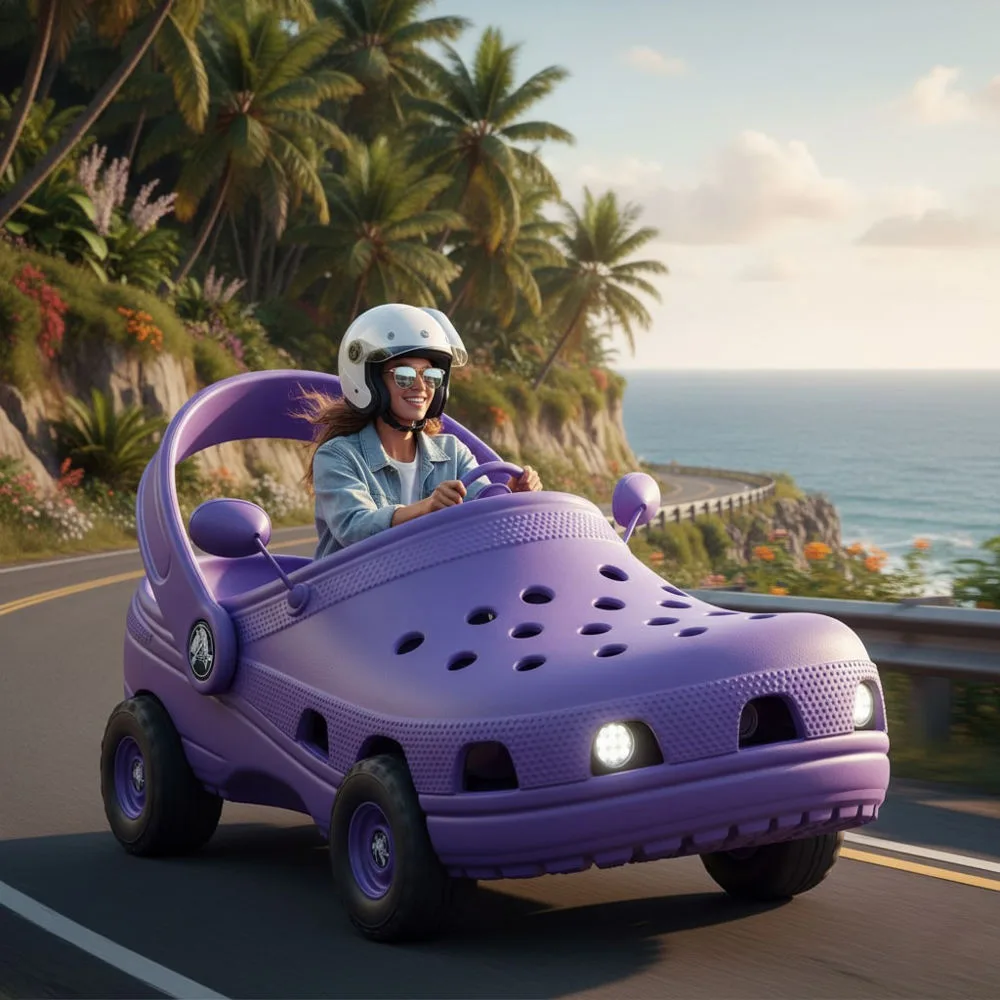
Custom Builds and One Off Creations
Several talented automotive craftsmen have taken on the challenge of building actual Crocs shaped cars, resulting in remarkable creations that blur the line between art and transportation. These custom builds typically start with existing vehicle platforms that are then extensively modified to achieve the desired shoe like appearance.
One particularly impressive example emerged from a California based custom car shop, where builders spent months crafting a fully functional vehicle that captured the essence of classic Crocs design. The project involved extensive fiberglass work to create the characteristic rounded profile, while incorporating the signature ventilation holes as both aesthetic elements and functional air intakes for cooling systems.
Concept Vehicles and Design Studies
Automotive design schools and independent concept artists have embraced the Crocs shaped cars theme as an exercise in creative problem solving. These design studies explore various interpretations of how footwear aesthetics might translate into vehicle form, often pushing boundaries and challenging conventional automotive design principles.
Some concept designs have explored electric vehicle platforms as the foundation for Crocs shaped cars, arguing that the unconventional appearance pairs well with innovative propulsion technology. These studies often incorporate sustainable materials and manufacturing processes that align with contemporary environmental consciousness in automotive design.
Engineering Challenges and Solutions
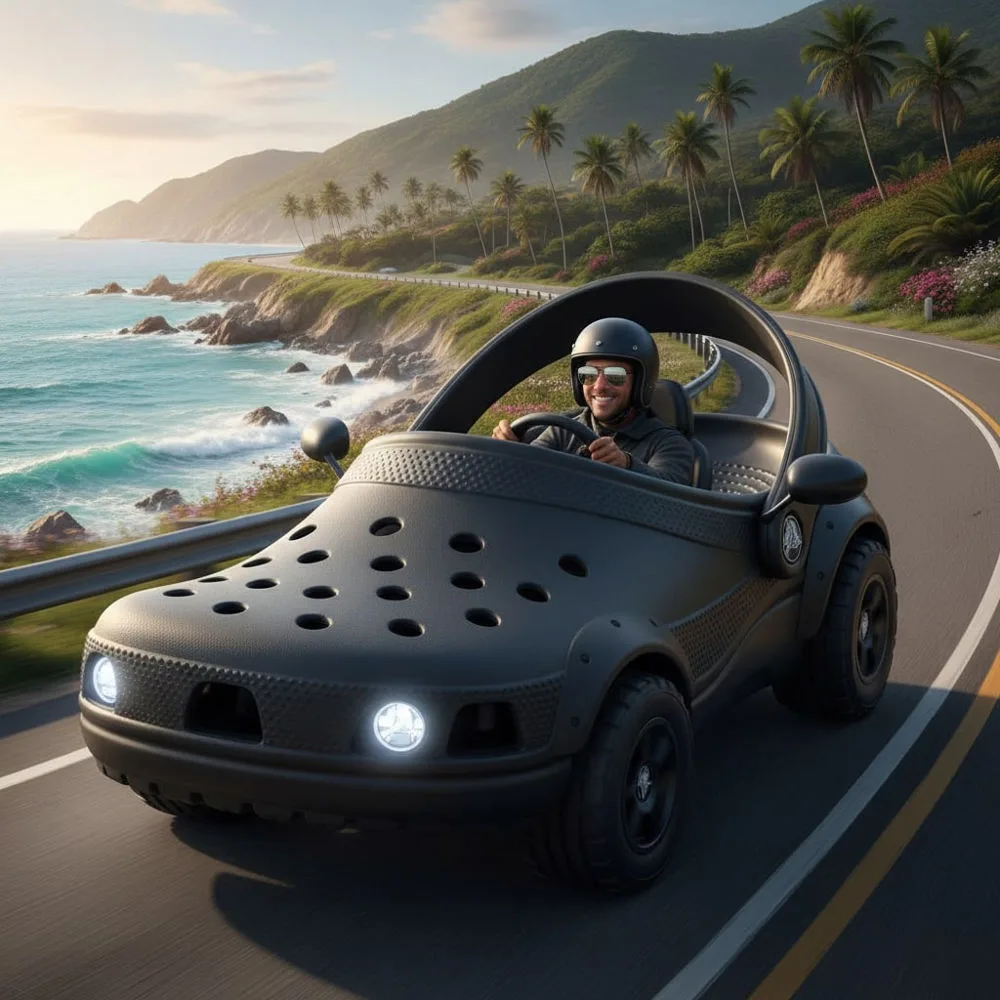
Structural Considerations
Building functional Crocs shaped cars presents unique engineering challenges that don’t exist in traditional automotive design. The organic, rounded shape of the original footwear doesn’t naturally lend itself to the structural requirements of vehicle construction, requiring creative solutions to maintain both aesthetic integrity and safety standards.
Engineers working on these projects must address concerns related to aerodynamics, structural rigidity, and crash safety while preserving the distinctive appearance that makes these vehicles special. The characteristic holes found in Crocs designs, for instance, cannot simply be replicated as open voids in vehicle bodywork without compromising structural integrity and weather protection.
Innovative Material Applications
The construction of Crocs shaped cars has led to interesting applications of materials and manufacturing techniques borrowed from various industries. Some builders have experimented with expanded foam composites that echo the material properties of actual Crocs while providing the durability needed for automotive applications.
Advanced 3D printing technologies have also played a role in creating complex curved panels and trim pieces that would be difficult or impossible to produce using traditional metalworking techniques. These technological applications demonstrate how niche automotive projects can drive innovation in manufacturing processes.
Cultural Impact and Public Reception
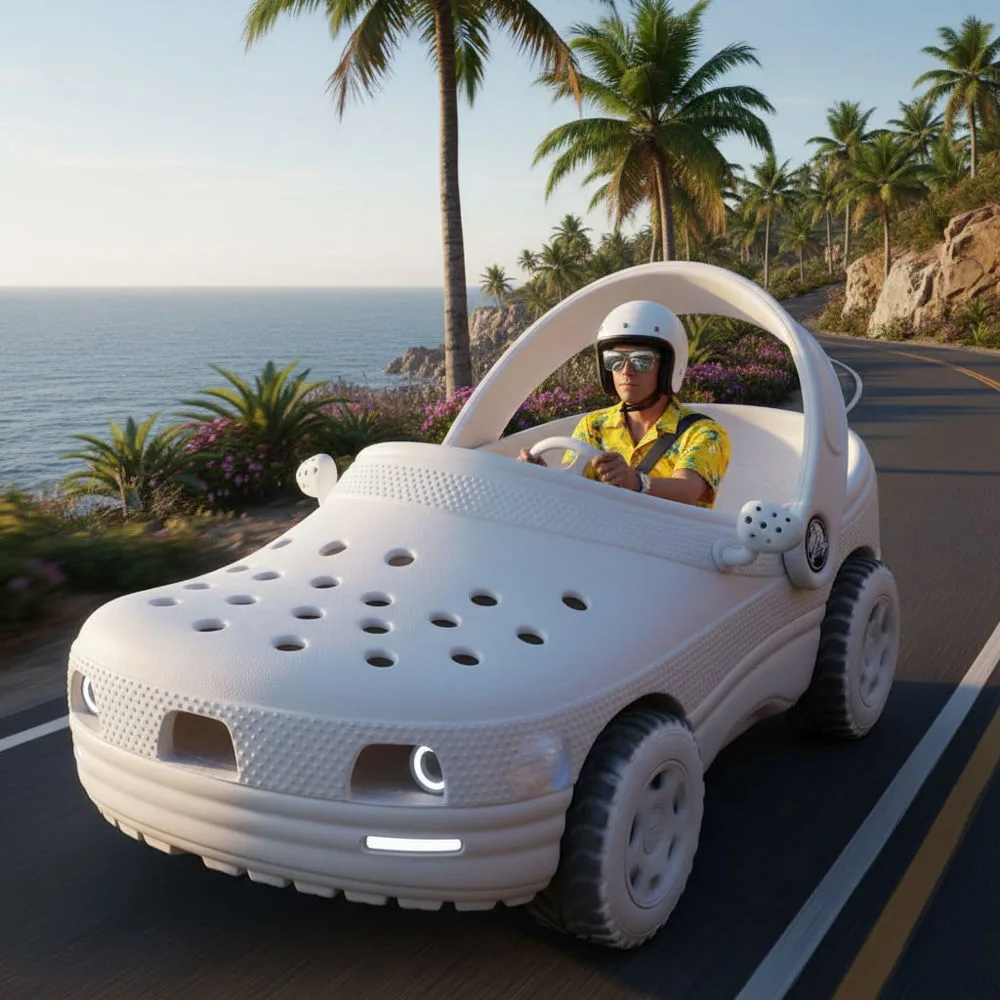
Social Media Phenomenon
Crocs shaped cars have found particular resonance on social media platforms, where images and videos of these unique vehicles regularly go viral. The combination of familiar footwear design and unexpected automotive application creates content that naturally encourages sharing and discussion among diverse online communities.
The popularity of these vehicles on platforms like Instagram, TikTok, and YouTube has helped build a community of enthusiasts who appreciate the creativity and craftsmanship involved in their creation. This online presence has also inspired additional builders to attempt their own interpretations of the concept, contributing to the growth of this niche automotive subculture.
Automotive Show Appearances
Several Crocs shaped cars have made appearances at major automotive shows and custom car events, where they consistently draw crowds and media attention. These vehicles serve as conversation starters and demonstrate the creative potential within the custom car building community.
The reception at automotive events has generally been positive, with enthusiasts appreciating both the technical skill required to execute such unusual builds and the humor inherent in the concept. Industry professionals often praise these projects as examples of thinking outside conventional design parameters while maintaining high standards of craftsmanship.
Technical Specifications and Build Details
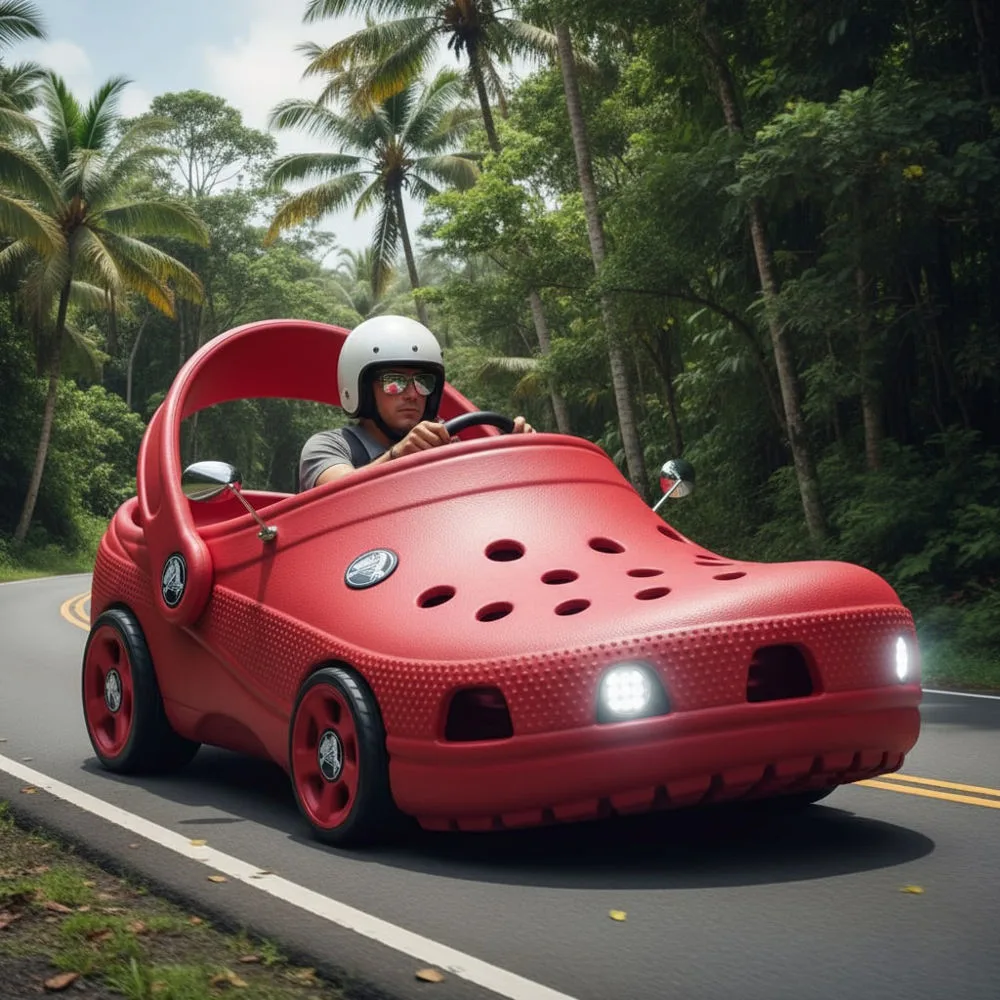
Platform Selection and Modification
Most successful Crocs shaped cars begin with carefully selected donor vehicles that provide appropriate proportions and mechanical components. Compact cars and small SUVs often serve as good starting points due to their size and structural characteristics that can be more easily modified to achieve the desired appearance.
The modification process typically involves extensive bodywork to create the rounded, organic shape characteristic of Crocs footwear. This often requires custom fabricated panels, extensive use of body filler and shaping compounds, and careful attention to maintaining proper weight distribution throughout the vehicle.
Interior Design Adaptations
Creating interiors for Crocs shaped cars presents unique challenges in balancing thematic consistency with occupant comfort and safety. Some builders have incorporated design elements that echo the perforated patterns and color schemes of actual Crocs, while others have taken more subtle approaches that reference the footwear without overwhelming the cabin environment.
Seating arrangements often require custom solutions due to the unusual exterior shape, with some builders creating bench style seating that maximizes the use of available interior space while maintaining the organic feel of the overall design concept.
Market Potential and Commercial Viability
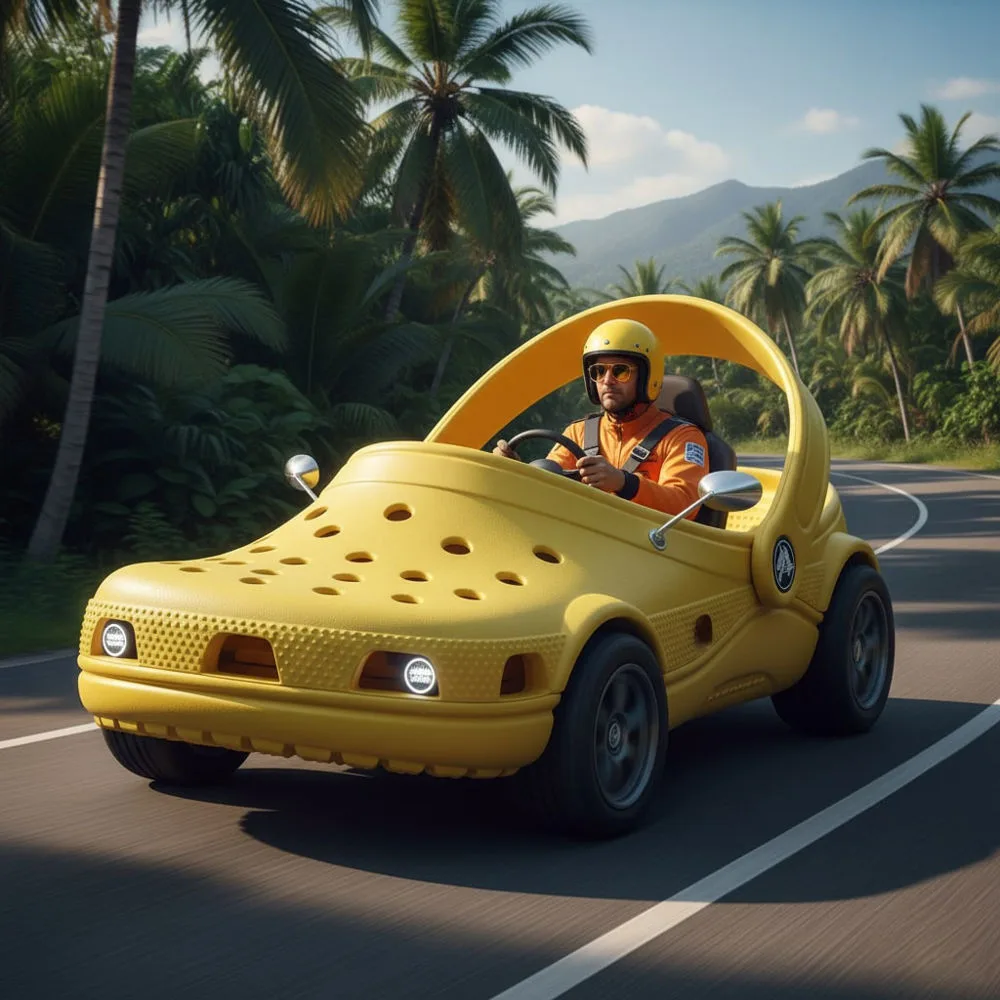
Limited Production Possibilities
While Crocs shaped cars remain primarily one off custom builds, there has been speculation about potential limited production runs for enthusiasts willing to pay premium prices for such unique vehicles. The specialized nature of construction and limited target market make mass production unlikely, but small batch manufacturing could potentially serve dedicated collectors.
The high cost of custom fabrication and the specialized skills required for construction mean that commercially available Crocs shaped cars would likely command significant prices, limiting their accessibility to affluent enthusiasts and collectors.
Licensing and Brand Collaboration
The potential for official collaboration between automotive manufacturers and the Crocs brand has been a topic of discussion among industry observers. Such partnerships could result in factory produced vehicles that incorporate officially licensed design elements while benefiting from professional automotive engineering and safety testing.
Any commercial venture would need to carefully navigate trademark and design rights while ensuring that resulting vehicles meet all applicable safety and emissions standards in their intended markets.
Future Developments and Trends
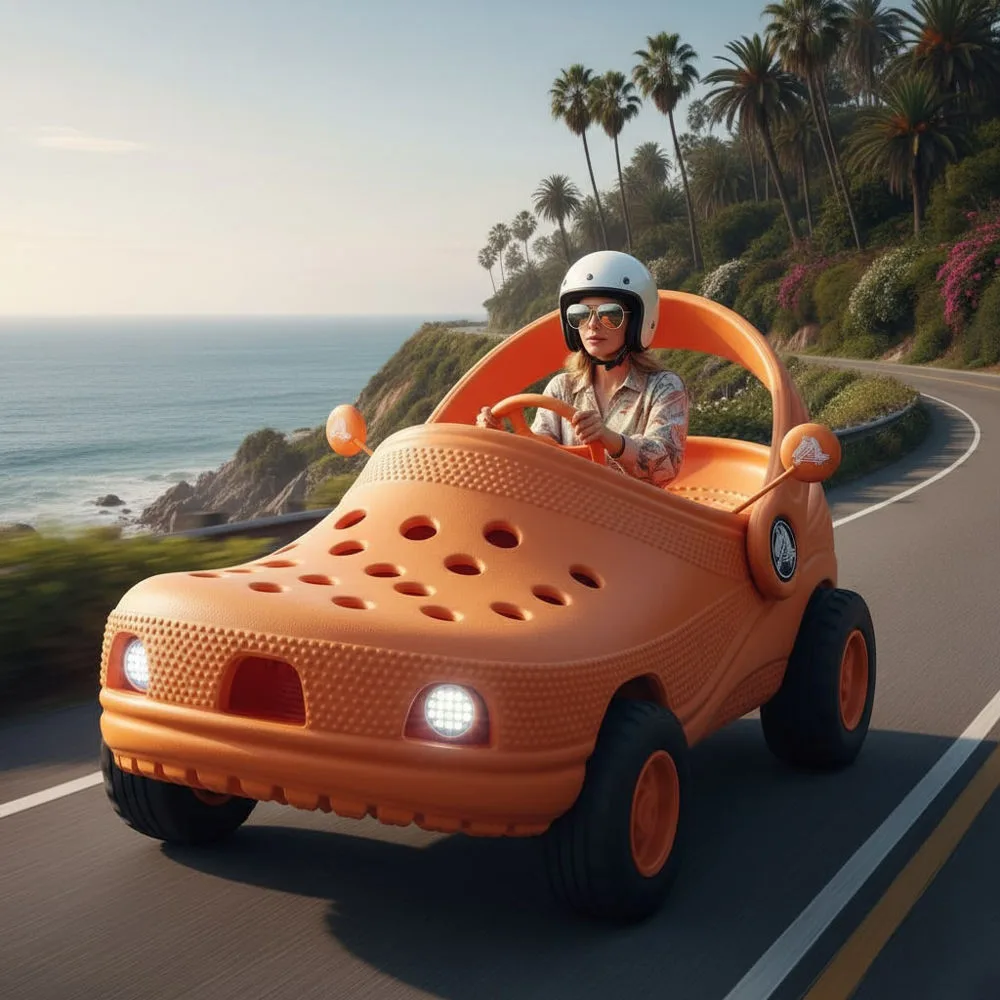
Evolution of Design Concepts
As the Crocs shaped cars phenomenon continues to evolve, builders and designers are exploring more sophisticated interpretations of the basic concept. Advanced computer modeling and simulation tools allow for more precise execution of complex curved surfaces while ensuring structural integrity and performance characteristics meet expectations.
Future builds may incorporate more advanced materials and manufacturing techniques, potentially including carbon fiber construction methods and integrated electronic systems that enhance both functionality and visual appeal.
Integration with Electric Vehicle Technology
The unique aesthetic of Crocs shaped cars pairs particularly well with electric vehicle platforms, as the unconventional appearance complements the innovative nature of electric propulsion technology. Future builds may increasingly incorporate electric drivetrains, taking advantage of the design flexibility offered by electric vehicle architectures.
Battery packaging within the unusual body shape presents interesting challenges and opportunities for creative engineering solutions that could influence broader electric vehicle design approaches.
Conclusion
Crocs shaped cars represent a fascinating convergence of popular culture, automotive craftsmanship, and creative expression that demonstrates the endless possibilities within custom vehicle building. These unique automobiles serve as rolling artwork that celebrates both the iconic design of beloved footwear and the technical skills of talented builders who bring seemingly impossible concepts to life.
The phenomenon highlights how automotive culture continues to evolve and embrace unconventional ideas that challenge traditional design boundaries. Whether viewed as serious custom builds, artistic statements, or simply fun expressions of creativity, Crocs shaped cars have carved out a distinctive niche that continues to inspire builders and delight audiences worldwide.
As automotive technology advances and manufacturing techniques become more accessible, we can expect to see even more impressive interpretations of this concept. The enduring popularity of both Crocs footwear and custom automotive culture suggests that Crocs shaped cars will continue to evolve and capture imaginations for years to come, proving that sometimes the most unexpected combinations can result in truly memorable creations.
The success of these projects demonstrates that automotive enthusiasm knows no bounds when creativity meets craftsmanship. Crocs shaped cars stand as testament to the power of imagination in transforming everyday objects into extraordinary expressions of mobile art that bring joy to creators and observers alike.

